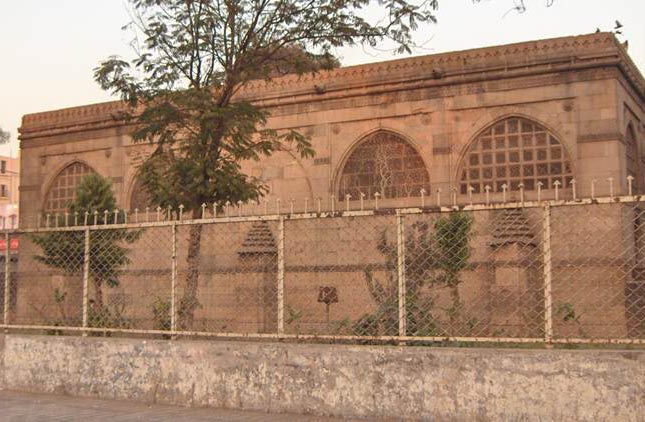Sidi Saiyyed Mosque

Information on Sidi Saiyyed Mosque (Ahmedabad, Gujarat) - History & Architecture
Sidi Saiyyed Mosque is one of the most popular masjids in Ahmedabad of Gujarat. The masjid is famous for its complicated jali. Significant number of visitors come in Sidi Saiyyed Mosque in order to explore this amazing monument. Visiting the masjid is actually an uncommon experience in itself. The exclusive decoration of Sidi Saiyyed Mosque along with its religious significance makes it one of the supreme sacred places, particularly for Muslim devotees in Ahmedabad. It is an important mosque in Ahmedabad where huge number of devotees throng here to offer prayers and keep in prayers the almighty Allaha.
Sidi Saiyyed Mosque Religious Significance
The significance of Sidi Saiyyed Mosque is quite attention grabbling. It was impeccably created in the year 1573 by Sidi Saiyyed, who was a slave of Sultan Ahmed Shah. He was the fifth sultan of Pahang. Other point of attraction of Sidi Saiyyed Mosque is that it was created in the final year of rule of the Sultanate of Gujarat.
Sidi Saiyyed Mosque is renowned not only in India, but also in the entire world due to its superb stone design. Sidi Saiyyed himself is admired all over the world among Muslim devotees. Furthermore, the masjid also has its individual stone window tracery. It is a superb example of mild carvings which converts stone into latticework. From religious point of view, the mosque is very important and thus even being so old, it stands still with the time.
Sidi Saiyyed Mosque Mythology
Sidi Saiyyed Mosque is also known as 'Shaking Minaret' or 'Jhulta Minar'. It is said that when one of the towers of the masjid is shaken, the other one also start to tremble. Sidi Saiyyed Mosque is obviously created by major artistry and the vital system which makes the constant tremor of towers is still unknown.
The other popular feature of Sidi Saiyyed Mosque is its latticework windows, which is also termed as jalis. The jali which was used in the masjid has become motivation for symbol in a popular educational organisation of Ahmedabad. During the British realm, Englishmen pulled out a central jali of Sidi Saiyyed Mosque and took it to London in order to put it in the museum for public demonstration. Every year, thousands of devotees visit this masjid to enjoy such impressive architectural beauty.
Sidi Saiyyed Mosque Architectural Significance
The creation of Sidi Saiyyed Mosque is popular for its Indi Saracenic architectural style. It possesses ten wonderful jalis, coating on the upper walls. The back wall of the masjid is packed with rectangular stone carved panels with geometrical designs. There are two semi-circular shades on the western wall of the masjid, which is quite remarkable. They lines the central passageway with reticulated stone lumps, carved in decorations of tangled trees, greenery and palm theme. There is gardens which surrounds the masjid.
The middle window arch of Sidi Saiyyed Mosque, where one usually guess to observe another jali, is actually enclosed with stone. It is believed that the construction of the masjid was not finished in accordance with the plan before Mughals entered in Gujarat. The walls of Sidi Saiyyed Mosque is characterised by flower designs and is exquisitely carved out of the yellow stone works. Such architecture is quite common in the masjids' of Ahmedabad. The eastern face of Sidi Saiyyed Mosque is open, illuminating a host of columns which has divided the central gallery of the masjid. There are statues of various Hindu myths in the masjid. The influence of Hindu and Jain craftsmanship is apparent from Sidi Saiyyed Mosque.